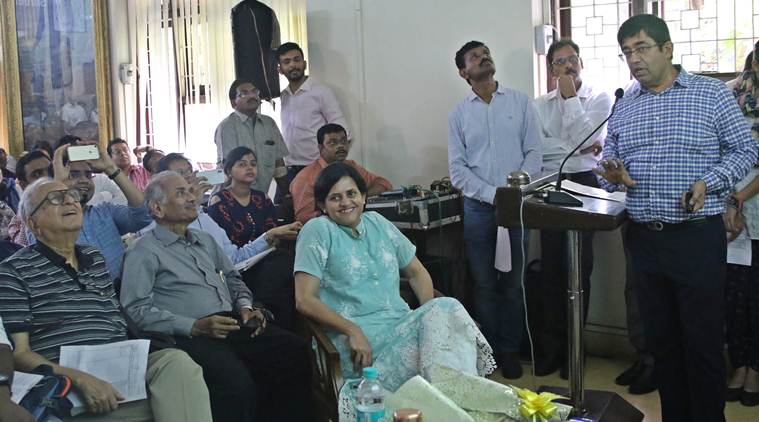
Mumbai Metro Rail Corporation Limited (MMRCL) Managing Director Ashwini Bhide on Monday said Metro Line 3 (Colaba-Bandra-SEEPZ) would not be feasible if a carshed could not be set up at Aarey Colony.
Bhide was speaking at a town hall interaction on the issue of felling trees at the colony, held at SNDT Women’s University in Churchgate. Municipal Commissioner Praveen Pardeshi, a director in MMRCL, who was also present at the event, reiterated that Aarey was the only option for the carshed.
“Metro 3 project will not happen if the carshed is moved out of Aarey Colony… over 48 per cent of the project has been completed and so far Rs 11,200 crore has been spent… We had made efforts to resolve an ongoing legal dispute (over a site) at Kanjurmarg for one-and-a-half years but could not succeed. We accept that there is damage but you have to see we have taken mitigation steps…” Bhide said.
In the audience were students, teachers, opponents of the carshed and other members of civil society. The interaction was titled ‘Environment cost of Metro Rail mass public transport for Mumbai’ and was organised by SNDT. Activist Zoru Bhathena and environmentalist Stalin D of NGO Vanshakti, who have been at the helm of protests against the proposal, were also part of the debate.
“It is being spread that concretisation for metro car shed will lead to flooding. It is not true. The project will affect the catchment area of Mithi. I agree with that, but the whole area is not going to be concretised. Five hectares will be untouched. Also, we are going to have a better stormwater drain,” Bhide said.
Pardeshi reiterated Bhide’s words, adding, “The carshed at Aarey does not mean that it will destroy the whole colony. There are over 4.5 lakh trees in Aarey and the project will affect only 2,700 trees. Also, Mumbai has the highest green cover than any megacity in the world. Another narrative is being spread that the Metro Line 3 will not reduce pollution in the city but if you see global figures for cities like New York and Tokyo, where the trees per square km are far less than Mumbai, they have minimum pollution. It was achieved due to the public transport system.”
“In all, the land use in Mumbai is only 29 per cent and about 70 per cent of land is still kept open in the city’s development plan… It is not part of the forest and the HC and SC have said this in their judgments. Cutting of trees bothers us but there is no option.”
During the heated two-hour debate, activists and members of civil society accused the government of lying, while officials accused the audience of getting their facts wrong. At one point, Pardeshi lost his temper and said he would not speak further unless members of the audience who accused the government of lying left the premises.
Meanwhile, Stalin and Bathena claimed that the government had not even inspected and checked the feasibility of eight other sites suggested by an expert advisory committee.
“As per the government, the ecological cost of one tree is Rs. 23,000 per year. The total cost of trees to be cut at the Aarey site in the last five years exceeds Rs 3,500 crore. So while discussing cost escalation due to shifting of carshed, we also look at environmental damage, which is irreparable,” said Bhathena.
Arguing that trees in Aarey should be saved, Stalin D said, “The Metro has already disturbed the environment of the city, and it is seen all over the world that Metro cannot reduce pollution or the number of private cars.”
“The government can accept slum-encroached area as a forest but isn’t ready to consider the lush green Aarey as part of a forest,” he said, referring to encroachment in Sanjay Gandhi National Park.